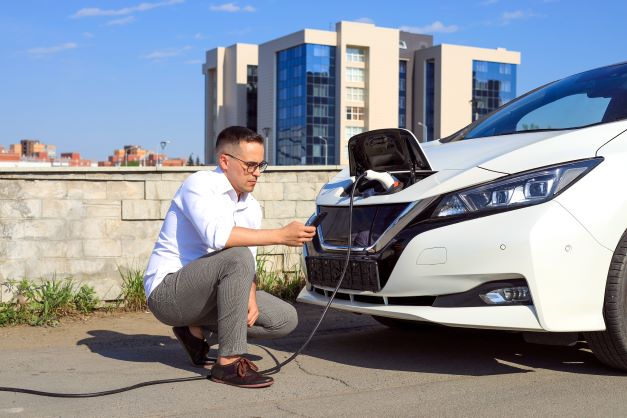Brian McCowan, Zondits staff, 12/22/2022
If you have been researching EVs, you have likely seen numerous articles, including some on Zondits, covering the national and global emissions impacts of replacing gasoline-powered cars with EVs. That’s useful information for sure. But we know that the impact is partly driven by the electrical generation mix in the state or region where the vehicle will be charged. The DOE’s Alternative Fuels Data Center maintains a web-based tool that allows the comparative net emissions impact for each of the 50 states.
The good news is that the impacts are positive regardless of the state in which you drive. And promises to get better as renewable energy continues a growth pattern. The impacts do vary greatly, however, and it’s an eye-opening exercise to check out the states where you live, work, and play, comparing them with other locales across the country.
The tool is intended to provide “well-to-wheel” and “cradle-to-grave” life-cycle average emissions for passenger vehicles. “Well-to-wheel” calculations include the extraction, refining, producing, and transporting of the fuel sources, while the “cradle-to-grave” calculations add other factors such as the energy consumed to manufacture and dispose of the vehicles.
The assumptions used were developed from multiple data sources, including the U.S. Energy Information Administration’s Open Data Set for Net Emissions; the Argonne National Laboratory GREET for Fuel Cycle and Vehicle Cycle Emissions Models; EPA Vehicle Reports; and the Oak Ridge National Laboratory Transportation Energy Data Book.
Although we encourage readers to check out the data for their states, below are some examples that demonstrate the wide range of annual impacts:
| Washington State | The State of Washington relies on fossil fuels for less than 20% of electrical generation, as hydroelectric power is the predominant source. |
| All electric vehicle | 705 lbs. of CO2e (CO2 equivalent emissions) |
| Plug-in hybrid | 3,411 lbs. of CO2e |
| Gasoline powered vehicle | 12,594 lbs. of CO2e |
| Texas | Renewable energy contributes approximately 26% in Texas, with natural gas and nuclear contributing the majority of fuel sources for electricity. |
| All electric vehicle | 3,020 lbs. of CO2e (CO2 equivalent emissions) |
| Plug-in hybrid | 4,959 lbs. of CO2e |
| Gasoline powered vehicle | 12,594 lbs. of CO2e |
| Pennsylvania | Natural gas, nuclear, and coal all contribute significantly to electrical generation. |
| All electric vehicle | 2,343 lbs. of CO2e (CO2 equivalent emissions) |
| Plug-in hybrid | 4,506 lbs. of CO2e |
| Gasoline powered vehicle | 12,594 lbs. of CO2e |
| California | Solar, wind, hydro, geothermal, and biomass makeup over 50% of the source fuels for electricity. |
| All electric vehicle | 1,473 lbs. of CO2e (CO2 equivalent emissions) |
| Plug-in hybrid | 3,924 lbs. of CO2e |
| Gasoline powered vehicle | 12,594 lbs. of CO2e |
| West Virginia | Over 90% of electricity is generated at coal-fired plants. |
| All electric vehicle | 6,228 lbs. of CO2e (CO2 equivalent emissions) |
| Plug-in hybrid | 7,105 lbs. of CO2e |
| Gasoline powered vehicle | 12,594 lbs. of CO2e |
| Maine | Nearly 70% of Maine’s electricity is generated from renewable sources. |
| All electric vehicle | 1,467 lbs. of CO2e (CO2 equivalent emissions) |
| Plug-in hybrid | 3,920 lbs. of CO2e |
| Gasoline powered vehicle | 12,594 lbs. of CO2e |
Averages are used for the miles driven within each state and the emissions performance within each vehicle category. Therefore, the results for any individual vehicle/driver combination will obviously vary. Yet, it is useful and interesting to consider how impacts vary from state-to-state, and how the growth of the clean power industry is affecting net emissions.
Learn more about emissions here:
- U.S. DOE: Emissions from Electric Vehicles
- U.S. DOE: Data Sources and Assumptions for the Electricity Sources and Emissions Tool
- U.S. Energy Information Administration: API Technical Documentation
- Argonne National Laboratory: Energy Systems and Infrastructure Analysis
- Argonne National Laboratory: Well-to-Wheels Energy Use and Greenhouse Gas Emissions Analysis of Plug-in Hybrid Electric Vehicles
- Oak Ridge National Laboratory: Transportation Energy Data Book
